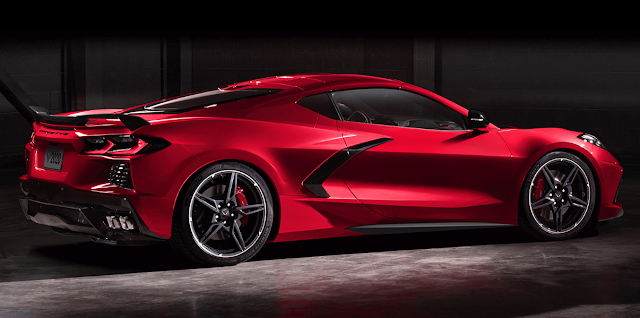History of the Corvette: Part 1
This week was the debut of the 2020 Chevrolet Corvette convertible. This all-new mid-engine sports car is so much more than Next Generation – it’s next level. At once precise and powerful, the Corvette Stingray has been completely redesigned from the ground up to deliver a thrill on every drive. And with a starting price of $59,995, the 2020 Stingray brings power to the people. Hulett Chevrolet Buick GMC is proud to be a dealer of the mid-engine masterpiece that promises a crazy amount of sports car performance for the asking price. With the excitement surrounding the new model, this week’s blog will highlight the history of the Corvette.
In 1953 the world received the first glimpse of this iconic car at an auto show in New York City at the Motorama show. Development had started in late 1951 but six months after the car show production of the corvette began in Flint, Michigan. There were 300 cars produced with a 3.9-liter inline six-cylinder engine with 150hp. The only color available was Polo White with a red interior and had a sticker price of $3,490. By the end of 1953, the production of the sports car was moved to St. Louis, Missouri. In 1954 three paint colors were added: black, red, and blue. Even with the changes Chevrolet was having issues selling the Corvette, only 3640 units yielded in 1954. The factory in St. Louis was capable of producing 10,000 Corvettes per year. By 1957 the six-cylinder engine was replaced by a manual transmission. In the C1’s last year of production in 1962, there was an option pack with as much power as 340 horsepower.
The second-generation Corvette included some big changes with the birth of the Sting Ray. In 1963 the Sting Ray had a coupe body, independent rear suspension, and a standard 5.4-liter V8 engine. A unique split-window design was introduced to the market with the Sting Ray. Customers had options to pick different versions of the engine to make 300, 340, or 360 horsepower. By 1967 there were modifications to the C2 Corvette’s design. There was a bigger engine option offered with the L88. Only 20 Corvettes produced with the L88.
In 1968 the C2 was replaced with the C3 model. The new model had details from Larry Shinoda’s Mako Shark II concept car. The formal rear storage area was no longer available. Although the new body style included removable roof panels. The third generation went from Sting Ray to Stingray in 1969 with a new exterior. A coupe and convertible body style were both available in this model but only lasted until 1975 due to slow sales. In 1969 an optional factory-installed Zr-1 racing package appeared on the Corvette. The ZR-1 was not offered with power windows, power steering, AC, sound system, or rear window defroster. In 1980 several updates could visually be noticed like new bumpers, hood, and integrated rear spoiler. Air conditioning, power window, and tilt steering became standard features. In 1981 the production left St. Louis and moved to Bowling Green, Kentucky where production remains today.
Next week we will continue the history of the Corvette starting with with the C4 model. If you are looking for an iconic sports car, shop no further call the best car dealership in Camdenton. You can browse through our inventory at www.ShopHulett.com or if you are looking for something specific call us at 573-346-7272.

Sales: 573.317.4191

Hulett Chevrolet Buick GMC - That's The Way We Do It At Hulett!
Camdenton, MO 65020
Sales: 573.317.4191
Service: 573.317.4195
Follow Us on Social Media:








Comments
Post a Comment